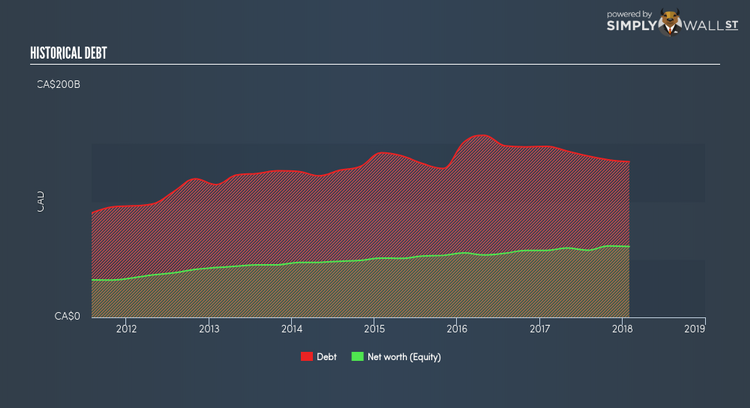What You Should Know About The Bank of Nova Scotia’s (TSE:BNS) Risks

As a CA$ 96.82B market capitalisation bank, The Bank of Nova Scotia (TSX:BNS) is well-positioned to benefit from the improving credit quality as a result of post-GFC recovery. Growth stimulates demand for loans and impacts a borrower’s ability to repay which directly affects the level of risk Bank of Nova Scotia takes on. With stricter regulations as a consequence of the recession, banks are more conservative in their lending practices, leading to more prudent levels of risky assets on the balance sheet. The level of risky assets a bank holds on its accounts affects the attractiveness of the company as an investment. So today we will focus on three important metrics that are insightful proxies for risk. Check out our latest analysis for Bank of Nova Scotia
How Much Risk Is Too Much?
By nature, Bank of Nova Scotia is exposed to risky assets by lending to borrowers who may not be able to repay their loans. Generally, loans that are “bad” and cannot be recovered by the bank should make up less than 3% of its total loans. When these loans are not repaid, they are written off as expenses which comes out directly from Bank of Nova Scotia’s profit. Since bad loans make up a relatively small 0.98% of total assets, the bank exhibits strict bad debt management and faces low risk of default.
Does Bank of Nova Scotia Understand Its Own Risks?
Bank of Nova Scotia’s ability to forecast and provision for its bad loans relatively accurately indicates it has a good understanding of the level of risk it is taking on. If it writes off more than 100% of the bad debt it provisioned for, then it has inadequately estimated the factors that may have added to a higher bad loan level which begs the question – does Bank of Nova Scotia understand its own risk? Bank of Nova Scotia’s low bad loan to bad debt ratio of 96.77% means the bank has under-provisioned by -3.23%, indicating either an unexpected one-off occurence with defaults or poor bad debt provisioning.
Is There Enough Safe Form Of Borrowing?

Bank of Nova Scotia operates by lending out its various forms of borrowings. Customers’ deposits tend to carry the smallest risk given the relatively stable interest rate and amount available. Generally, the higher level of deposits a bank retains, the less risky it is deemed to be. Bank of Nova Scotia’s total deposit level of 74.35% of its total liabilities is within the sensible margin for for financial institutions which generally has a ratio of 50%. This indicates a prudent level of the bank’s safer form of borrowing and a prudent level of risk.
Next Steps:
Bank of Nova Scotia has maintained a safe level of deposits against its liabilities. Conversely its cash flow could be negatively impacted by its below-average bad debt management. Today, we’ve only explored one aspect of Bank of Nova Scotia. However, as a potential stock investment, there are many more fundamentals you need to consider. Below, I’ve compiled three important aspects you should further research:
Future Outlook: What are well-informed industry analysts predicting for BNS’s future growth? Take a look at our free research report of analyst consensus for BNS’s outlook.
Valuation: What is BNS worth today? Has the future growth potential already been factored into the price? The intrinsic value infographic in our free research report helps visualize whether BNS is currently mispriced by the market.
Other High-Performing Stocks: Are there other stocks that provide better prospects with proven track records? Explore our free list of these great stocks here.
To help readers see pass the short term volatility of the financial market, we aim to bring you a long-term focused research analysis purely driven by fundamental data. Note that our analysis does not factor in the latest price sensitive company announcements.
The author is an independent contributor and at the time of publication had no position in the stocks mentioned.

